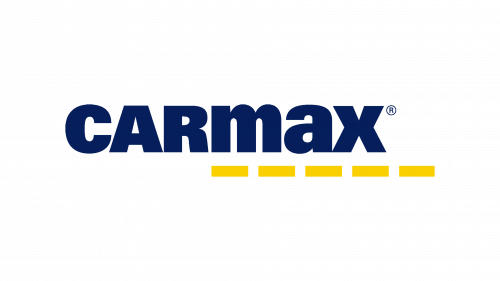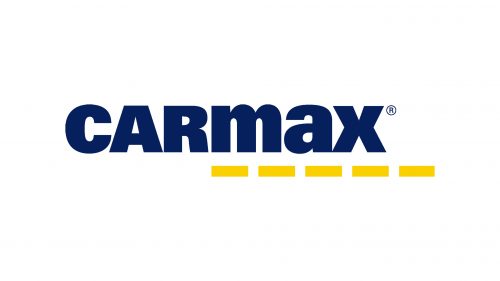

CarMax is a used vehicle retailer and wholesale vehicle auction operator headquartered in Richmond, Virginia, US. It was founded as a spin-off by Circuit City Stores, Inc. As of summer 2021, the number of retail locations reaches 225, they can be found in 41 states.
The CarMax logo is evocative, in its own unique way. While it doesn’t directly show any kind of vehicle, it conjures up relevant associations and, arguably, contributes to the customers’ “appetite” for a new car.
What is CarMax
CarMax, Inc. is a holding company focusing on selling used vehicles. In 2021, it was listed No #624 in Forbes Global 2000 list. In 2019, it was listed among the country’s best employers and even in the list of the world’s best employers where it was on the 160th line of the rankings.


The company traces its history to the fall of 1993, when the first retail location started working in Richmond, Virginia.
The concept behind the brand was created by executives from the consumer electronics retail company Circuit City. The team was led by Richard L. Sharp, who used to be the CEO back then. The work on the project, which was named Project-X, started in 1991. The project was also unofficially referred to as “Honest Rick’s Used Cars”. The person who came up with the original concept was Ronald L. Moore, a consultant who had been commissioned by Circuit City.
The creative brains behind the advertising part of the project were DeVito/Verdi, an advertising and public relations company based in New York City. It was responsible for the campaign and additional TV advertisements over several years.
The CarMax logo looks rather minimalist and clean. It is highly visible without being obnoxious.
The design is dominated by the name of the brand given in a rather bold sans serif typeface. The letters have classic proportions and an utterly traditional shape, rather like a default typeface.
And yet, there is a somewhat unusual or even “irregular” characteristic in this wordmark, apart from the weight. The first three letters are capitals, while the final three letters are lowercase. Despite that, they all have the same height and size. Here, the choice of the letter case was used as a way to create a visual border between the words “Car” and “Max”. Due to it, it is a little easier for the viewer to break the name of the brand into two meaningful parts, and thus to get the message of the logo.
Another thing that helps to create this border is the yellow dashed line behind the wordmark – it starts exactly under the “m” signaling the beginning of the word “max”. In the version of the logo, where the wordmark is placed inside a blue box, an additional border is created by the color (“car” is yellow, while “max” is white). However, this approach isn’t used in the version, where the logo is set against the white background.
In addition to signaling the “border”, the dashed line plays an important part in the overall impression the logo leaves. It adds a dynamic touch and also connotes the highway as it imitates the dashed line on the highway.
So, symbolically, this logo represents a car that is starting its way on the highway. This is exactly why a typical customer visits CarMax locations – to buy a car.
The palette, which constitutes contrasting colors, looks vibrant and reasonably eye-catching. There are no complex combinations or rare hues, which mirrors the company’s promise of a purchasing experience that is “simpler, more trustworthy and transparent”.
Despite the simple typeface, the CarMax logo looks memorable enough due to the palette and the unusual combination with the dashed line.